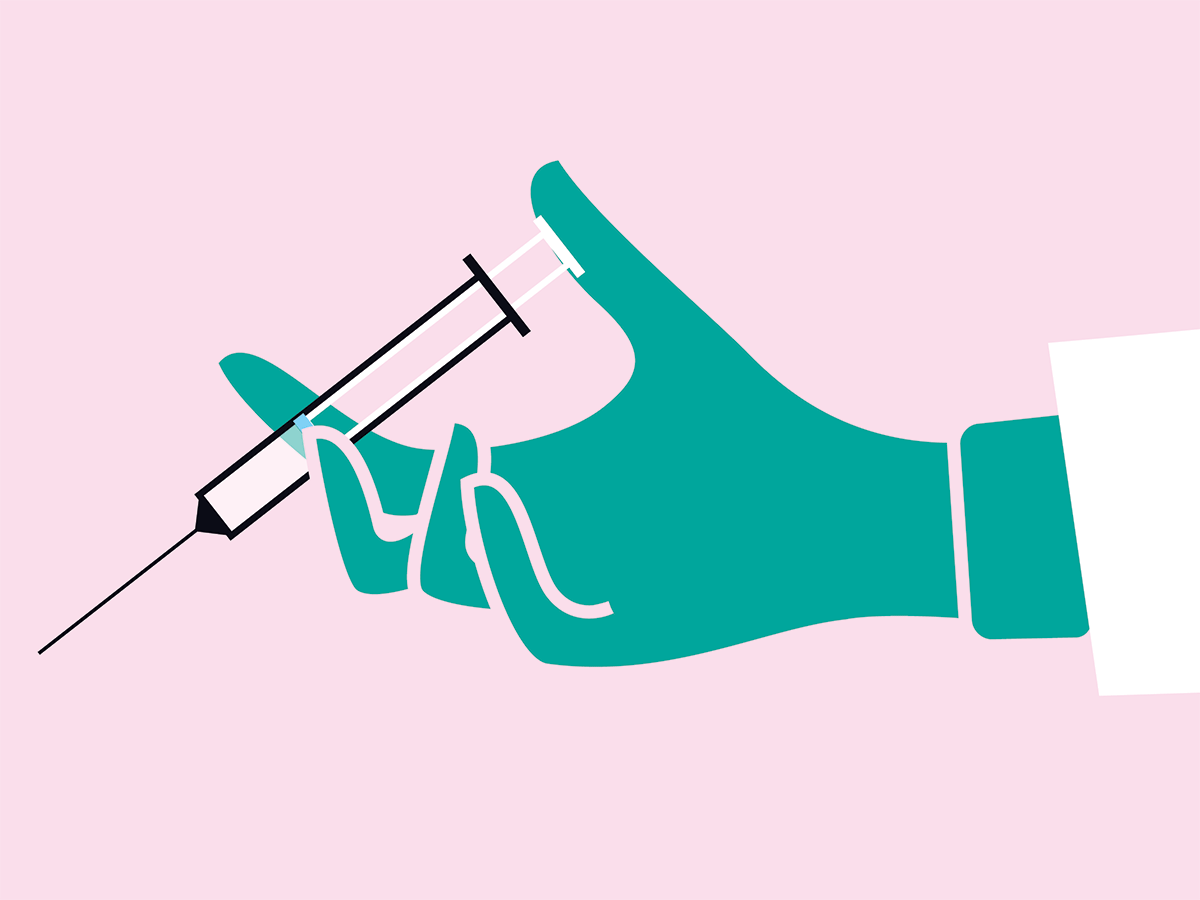This Treatment Could Prevent the Tension Headache You Get From Staring at the Computer All Day
If you don’t like relying on medication to alleviate headaches and migraines, this could be a better alternative for you—and it has anti-aging benefits.

There are a few things I blame for the tension headache I get between my eyebrows. The first: staring at my work computer. The second: squinting under the fluorescent lights at my work computer. And the third: the facial expressions I make reading stuff, under the fluorescent lights, on my work computer. The ache is unavoidable. The only solution would be to stop tensing the muscles that cause the ache. But how?
“Botox reduces tension by preventing muscles from contracting or being in a persistent tense state,” says Dr. Benjamin Barankin, a Toronto-based dermatologist and Founder & Medical Director of Toronto Dermatology Centre. Unlike medications and other remedies that address symptoms, Botox is used as a preventative treatment. It inhibits the muscle that can cause a tension headache from being used and therefore prevents the ache from transpiring.
Using Botox for health purposes isn’t anything new—Health Canada approved the use of the injection to treat migraines back in 2011. But now that Botox is more understood and common for both cosmetic and medical reasons (there’s been a 5.1 percent increase in procedures since 2017, according to the American Society for Aesthetic Plastic Surgery), it’s more accepted as a treatment option. In fact, Botox is used worldwide to treat millions of people with a myriad of health conditions, says Dr. Barankin.
I asked Dr. Barankin just about every neurotic concern you may have about getting Botox for tension headaches and migraines.
How exactly could Botox prevent tension headaches? Does it freeze a certain muscle so it’s not used?
“Botox effectively relieves tension wherever it is injected,” says Dr. Barankin. “It stops or greatly reduces the signaling that occurs between nerves and muscles.” Botox also alters Calcitonin Gene-Related Peptide (CGRP) levels, he says, and CGRP is responsible for the pain of a migraine. (Is facial acupuncture a better option than Botox for you? Find out.)
How does the procedure for getting Botox for a health issue differ from getting it for anti-aging purposes?
They differ in a couple of ways. One, the dosing is higher for treating a health concern than it is for a cosmetic benefit, says Dr. Barankin. And two, many health plans will cover some or all of the cost of Botox for health purposes.
The procedures are similar in that some of the injection points are the same, says Dr. Barankin. So, you can end up getting a double benefit (read: pain relief and anti-aging results).
Where is it typically injected when treating tension headaches and migraines?
It depends on where the patient experiences headaches and where they experience pain, says Dr. Barankin. Typically, these spots are in the forehead, area around the eyes, temples and the back of the neck.
How often would injections be needed?
About every three months. (Wondering if it’s painful? Here’s what you need to know.)
Is it possible for Botox to lose effectiveness after a certain number of treatments?
A small percentage of people find that Botox loses its effectiveness over time, which means their dosage may have to be increased, says Dr. Barankin. However, there are other products on the market now that can have similar effects to Botox and more are coming soon (including a topical one). So there are many alternative options to explore, he says.
Since Botox freezes muscles in the forehead, is it possible to overuse other muscles which could lead to wrinkles in other areas (like “bunny nose” wrinkles or wrinkles around the mouth)?
Dr. Barankin says this shouldn’t be possible if Botox is administered by a dermatologist. (Learn why it’s so important to get Botox only by a physician.)
I read on Vogue that Botox could thin the skin and make you look older—is this true?
“It can if used regularly for years in the temples for headache purposes,” says Dr. Barankin. “It can make the area appear a bit more hollow, which is a sign of aging.” If that happens, he says, it can be easily corrected with a touch of filler.
Next, read about Botox myths you need to stop believing.




